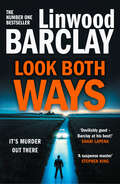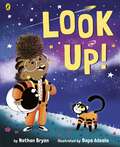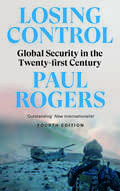- Table View
- List View
Longwall Mining, 3rd Edition
by Syd S. PengIn the past 13 years since the publication of Longwall Mining, 2nd edition in 2006, although there have been no major changes in longwall mining technology and operations, many incremental developments in the whole system as well as various subsystems of the existing longwall mining operational technologies as detailed in the 2nd edition have been added to this edition. Major developments are automation, and health and safety technology, as well as equipment reliability, thereby greatly increasing productivity and cutting cost. In particular, the longwall system can now run automatically cut by cut forever without operators' intervention provided that the geology allows it. Other health and safety features such as LASC, personal proximity detection, color lighting, automatic shield water sprays and remote shearer control are fully operational. There are more than 7000 sensors installed in current longwall mining systems. The big data obtained and fast communication technology have been fully utilized to improve and solve operational problems in real time. Those features are fully documented in the new edition. In pursuit of high productivity and cutting cost, life cycle management that increases equipment reliability has been implemented by OEM. Automation improvement such as tail-end automatic chain tensioner greatly extends AFC chain's service life. Other incremental improvements including dust and methane controls, entry development, panel design and face move are addressed. Additional operational issues such as extension of panel width and compatibility test are also discussed. Since the last plow longwall mine was closed in 2018, the chapter on plow longwalling has been dropped and in its place Automation of Longwall Components and System is added. Also, a new chapter Longwall Top Coal Caving Mining (LTCC) is added due to its successful application in Australia since 2005. Longwall Mining, 3rd edition will be of interest to professionals and academics in the field of mining engineering specifically, serving both as a reference work and an (under)graduate textbook, but will also interest civil, geomechanical and geological engineers and rock mechanics professionals, as well as coal operators, mining consultants, researchers, equipment manufacturers, and government regulators.
Longwall Mining, 3rd Edition
by Syd S. PengIn the past 13 years since the publication of Longwall Mining, 2nd edition in 2006, although there have been no major changes in longwall mining technology and operations, many incremental developments in the whole system as well as various subsystems of the existing longwall mining operational technologies as detailed in the 2nd edition have been added to this edition. Major developments are automation, and health and safety technology, as well as equipment reliability, thereby greatly increasing productivity and cutting cost. In particular, the longwall system can now run automatically cut by cut forever without operators' intervention provided that the geology allows it. Other health and safety features such as LASC, personal proximity detection, color lighting, automatic shield water sprays and remote shearer control are fully operational. There are more than 7000 sensors installed in current longwall mining systems. The big data obtained and fast communication technology have been fully utilized to improve and solve operational problems in real time. Those features are fully documented in the new edition. In pursuit of high productivity and cutting cost, life cycle management that increases equipment reliability has been implemented by OEM. Automation improvement such as tail-end automatic chain tensioner greatly extends AFC chain's service life. Other incremental improvements including dust and methane controls, entry development, panel design and face move are addressed. Additional operational issues such as extension of panel width and compatibility test are also discussed. Since the last plow longwall mine was closed in 2018, the chapter on plow longwalling has been dropped and in its place Automation of Longwall Components and System is added. Also, a new chapter Longwall Top Coal Caving Mining (LTCC) is added due to its successful application in Australia since 2005. Longwall Mining, 3rd edition will be of interest to professionals and academics in the field of mining engineering specifically, serving both as a reference work and an (under)graduate textbook, but will also interest civil, geomechanical and geological engineers and rock mechanics professionals, as well as coal operators, mining consultants, researchers, equipment manufacturers, and government regulators.
Longwave Instabilities and Patterns in Fluids (Advances in Mathematical Fluid Mechanics)
by Sergey Shklyaev Alexander NepomnyashchyThis book summarizes the main advances in the field of nonlinear evolution and pattern formation caused by longwave instabilities in fluids. It will allow readers to master the multiscale asymptotic methods and become familiar with applications of these methods in a variety of physical problems. Longwave instabilities are inherent to a variety of systems in fluid dynamics, geophysics, electrodynamics, biophysics, and many others. The techniques of the derivation of longwave amplitude equations, as well as the analysis of numerous nonlinear equations, are discussed throughout. This book will be of value to researchers and graduate students in applied mathematics, physics, and engineering, in particular within the fields of fluid mechanics, heat and mass transfer theory, and nonlinear dynamics.
Lonsdale Essentials: Revision Guide (PDF)
by VariousWritten for 2009 curriculum change, Essentials provides concise coverage of all the externally assessed course content and skills for GCSE Electronic Products.
Look-Ahead Based Sigma-Delta Modulation (Analog Circuits and Signal Processing)
by Erwin Janssen Arthur van RoermundThe aim of this book is to expand and improve upon the existing knowledge on discrete-time 1-bit look-ahead sigma-delta modulation in general, and to come to a solution for the above mentioned specific issues arising from 1-bit sigma-delta modulation for SA-CD. In order to achieve this objective an analysis is made of the possibilities for improving the performance of digital noise-shaping look-ahead solutions. On the basis of the insights obtained from the analysis, several novel generic 1-bit look-ahead solutions that improve upon the state-of-the-art will be derived and their performance will be evaluated and compared. Finally, all the insights are combined with the knowledge of the SA-CD lossless data compression algorithm to come to a specifically for SA-CD optimized look-ahead design.
Look Both Ways
by Linwood BarclayJust because that car sees you doesn’t mean it’s safe to cross… From the international bestseller Linwood Barclay comes a new, action-packed, utterly gripping crime thriller!
Look Both Ways
by null Linwood BarclayThey think as one. They act as one. They kill as one. ‘Look Both Ways is devilishly good – exciting, thrilling – Barclay at his best!’ SHARI LAPENA, No. 1 internationally bestselling author The residents of Garrett Island are part of a ground-breaking experiment. For a month, their cars will be replaced by self-driving vehicles – voice-controlled, comfortable and safe. Single mum Sandra is prepping for the huge media event, and she’s ready for a driverless future. Widowed after her husband fell asleep at the wheel, she’s relieved that her kids may never need to drive themselves. But as the day gets underway, disaster strikes. A journalist vanishes, possibly murdered. And before long, it’s clear something is very wrong. The cars are no longer taking orders from their passengers. They’re starting to organise. They’re starting to hunt. And they’ve got the residents of Garrett Island in their sights. From the Sunday Times Number One bestseller Linwood Barclay comes a breakneck new thriller, Look Both Ways. PRAISE FOR LOOK BOTH WAYS: ‘Look Both Ways is devilishly good – exciting, thrilling – Barclay at his best!’ SHARI LAPENA ‘If “Jurassic Park but with autonomous automobiles” sounds like a very cool concept, that’s because it is’ FINANCIAL TIMES PRAISE FOR LINWOOD BARCLAY: ‘A… rich blend of smart social comedy, tense perilous scenes and loathsome villainy’ SUNDAY TIMES ‘The twists keep coming’ THE TIMES ‘Barclay is a terrific writer … I couldn’t put it down, and you won’t be able to either. If you enjoy thrillers, this is the real deal. It never lets up’ STEPHEN KING ‘Stunning’ JEFFERY DEAVER ‘A full-throttle powerhouse of a thriller – Linwood Barclay is in a class of his own’ T.M. LOGAN ‘Linwood Barclay is a stone-cold pro’ JOE HILL ‘A rip-roaring rollercoaster of a ride’ DAILY MAIL ‘Linwood Barclay presses all the right buttons’ MICHAEL ROBOTHAM ‘One of the finest thriller writers in the world at the very top of his game’ MARK BILLINGHAM
Look Up!
by Nathan Bryon3 ... 2 ... 1 ... LIFT OFF. Let science-mad chatterbox Rocket launch into your hearts in this inspiring picture book from two incredible debut talents.Rocket's going to be the greatest astronaut, star-catcher, space-traveller that has ever lived!But...First, she needs to convince her big brother Jamal to stop looking down at his phone and start LOOKING UP at the stars.----Bursting with energy and passion about space and the natural world, this heart-warming picture book will reignite your desire to turn off those screens and switch on to the outside world.
Looking Ahead: Human Factors Challenges in A Changing World
by Raymond S. NickersonThis volume aims to review some of the recent developments and trends that seem especially relevant to any attempt to understand near-term-future possibilities; to consider what a variety of knowledgeable people are saying about changes and developments that could occur; and to relate the possibilities to needs and opportunities for human factors research. Human factors, in this case, includes not only the implications of human capabilities and limitations for the design of equipment and machines intended for human use, but also applied psychology in a more general sense. In particular, it is taken to involve social systems as well as physical ones, the interaction of people with the environment as well as with machines, the facilitation of communication between people as well as between people and computers, and the design of policies and procedures as well as the design of equipment. The author's intention is to focus on anticipated problems -- including opportunities as well as difficulties -- and ask how human factors research might contribute to solutions. It is assumed that there are ways in which such research could be useful in addressing societal problems that the profession has not yet realized and that these are more likely to be recognized in the future if the community is actively seeking to identify them.
Looking Ahead: Human Factors Challenges in A Changing World
by Raymond S. NickersonThis volume aims to review some of the recent developments and trends that seem especially relevant to any attempt to understand near-term-future possibilities; to consider what a variety of knowledgeable people are saying about changes and developments that could occur; and to relate the possibilities to needs and opportunities for human factors research. Human factors, in this case, includes not only the implications of human capabilities and limitations for the design of equipment and machines intended for human use, but also applied psychology in a more general sense. In particular, it is taken to involve social systems as well as physical ones, the interaction of people with the environment as well as with machines, the facilitation of communication between people as well as between people and computers, and the design of policies and procedures as well as the design of equipment. The author's intention is to focus on anticipated problems -- including opportunities as well as difficulties -- and ask how human factors research might contribute to solutions. It is assumed that there are ways in which such research could be useful in addressing societal problems that the profession has not yet realized and that these are more likely to be recognized in the future if the community is actively seeking to identify them.
Looking Beyond the Runway: Airlines Innovating with Best Practices while Facing Realities
by Nawal K. TanejaThe global airline industry, facing significant changes and discontinuity is prompted and forced to deal with a "new normal." Who would have imagined a few years ago that: - a significant percentage of consumers in the US now prefer to fly low-cost airlines instead of full-service airlines because they perceive the product to be better, - airlines would generate up to a third of their total income from non-ticket revenue, - many low-cost airlines would add complexity to their original simple business models through the development of code-share agreements, the use of global distribution systems, and travel agents to distribute their seats, - Jetstar, a low-cost subsidiary of Qantas, would grow faster and be more profitable than its parent, - a survey carried out by Ryanair would show that 42 percent of passengers would be willing to stand on short (one hour) flights if they could pay 50 percent less than seated passengers, - passengers could pay as little as US$2,000 for a transatlantic Business Class ticket on top-brand airlines, - Lufthansa would have ownership in airlines based in Austria, Belgium, Italy, Switzerland, Turkey, the UK, and the US, and that it would continue to pursue equity ownership in airlines based in Poland and Scandinavia, or - the Japanese and Canadian governments would struggle to find different ways to bail out their heretofore flag carriers? To deal with this upcoming "new normal", airlines have to go beyond their short-term circumstantial strategies - they need strategic renewal of their ageing business model. In this candidly-written book, Nawal Taneja explains what will separate the winners from the losers. He maintains the leaders will be the airlines that: (1) exploit this crisis-driven change to their best advantage, (2) learn to work around the airline-inherent constraints that prevent them from running their businesses just like other businesses, (3) learn from successes and failures of other global enterprises, (4) sharpen their business intelligence, analytics, and strategic agility, and (5) proactively explore the "pockets of growth" in this emerging-markets century. To help airline executives become informed of new competitive games, the author analyzes numerous business sectors such as auto, hospitality, retail, technology, and entertainment. For example, relevant lessons can be learned from the strategic mistakes made by the US automakers. Likewise, emergent and compelling insights can be gained in superior customer experience from Ritz Carlton and Zappos, and in value-creating innovation from Cirque du Soleil and Zipcar. The book also features a multitiude of forewords from airlines and related businesses to provide readers with multiple perspectives on the changing landscape in the global airline industry. Nawal Taneja is a career analyst of the global airline industry with wide-ranging experience in the aviation industry, academia, and public policy. Encouraged by industry executives, he has written five other books for practitioners in the global airline industry, including FASTEN YOUR SEATBELT: The Passenger is Flying the Plane and Flying Ahead of the Airplane.
Looking Beyond the Runway: Airlines Innovating with Best Practices while Facing Realities
by Nawal K. TanejaThe global airline industry, facing significant changes and discontinuity is prompted and forced to deal with a "new normal." Who would have imagined a few years ago that: - a significant percentage of consumers in the US now prefer to fly low-cost airlines instead of full-service airlines because they perceive the product to be better, - airlines would generate up to a third of their total income from non-ticket revenue, - many low-cost airlines would add complexity to their original simple business models through the development of code-share agreements, the use of global distribution systems, and travel agents to distribute their seats, - Jetstar, a low-cost subsidiary of Qantas, would grow faster and be more profitable than its parent, - a survey carried out by Ryanair would show that 42 percent of passengers would be willing to stand on short (one hour) flights if they could pay 50 percent less than seated passengers, - passengers could pay as little as US$2,000 for a transatlantic Business Class ticket on top-brand airlines, - Lufthansa would have ownership in airlines based in Austria, Belgium, Italy, Switzerland, Turkey, the UK, and the US, and that it would continue to pursue equity ownership in airlines based in Poland and Scandinavia, or - the Japanese and Canadian governments would struggle to find different ways to bail out their heretofore flag carriers? To deal with this upcoming "new normal", airlines have to go beyond their short-term circumstantial strategies - they need strategic renewal of their ageing business model. In this candidly-written book, Nawal Taneja explains what will separate the winners from the losers. He maintains the leaders will be the airlines that: (1) exploit this crisis-driven change to their best advantage, (2) learn to work around the airline-inherent constraints that prevent them from running their businesses just like other businesses, (3) learn from successes and failures of other global enterprises, (4) sharpen their business intelligence, analytics, and strategic agility, and (5) proactively explore the "pockets of growth" in this emerging-markets century. To help airline executives become informed of new competitive games, the author analyzes numerous business sectors such as auto, hospitality, retail, technology, and entertainment. For example, relevant lessons can be learned from the strategic mistakes made by the US automakers. Likewise, emergent and compelling insights can be gained in superior customer experience from Ritz Carlton and Zappos, and in value-creating innovation from Cirque du Soleil and Zipcar. The book also features a multitiude of forewords from airlines and related businesses to provide readers with multiple perspectives on the changing landscape in the global airline industry. Nawal Taneja is a career analyst of the global airline industry with wide-ranging experience in the aviation industry, academia, and public policy. Encouraged by industry executives, he has written five other books for practitioners in the global airline industry, including FASTEN YOUR SEATBELT: The Passenger is Flying the Plane and Flying Ahead of the Airplane.
Looking for Insight, Transformation, and Learning in Online Talk
by Trena M. Paulus Alyssa Friend WiseLooking for Insight, Transformation, and Learning in Online Talk is a comprehensive guide to analyzing digital interaction in formal and informal online spaces. The book establishes a new research framework for addressing major challenges that have arisen as social exchanges, meaning-making, and knowledge-building increasingly take place in social media, discussion forums, and online communities. With a focus on methodological alignment to support valid and trustworthy knowledge claims, the authors present a series of design decisions to help researchers: frame their object of interest and unpack underlying assumptions understand key differences between researcher-influenced and pre-existing online talk ethically extract and organize data for analysis apply rigorous qualitative, quantitative, and computational methods to answer their research questions Written for scholars in education, business, communication, media studies, health sciences, political sciences, and beyond, this is a thorough approach to the research methods and concerns essential to the study of talk in online contexts.
Looking for Insight, Transformation, and Learning in Online Talk
by Trena M. Paulus Alyssa Friend WiseLooking for Insight, Transformation, and Learning in Online Talk is a comprehensive guide to analyzing digital interaction in formal and informal online spaces. The book establishes a new research framework for addressing major challenges that have arisen as social exchanges, meaning-making, and knowledge-building increasingly take place in social media, discussion forums, and online communities. With a focus on methodological alignment to support valid and trustworthy knowledge claims, the authors present a series of design decisions to help researchers: frame their object of interest and unpack underlying assumptions understand key differences between researcher-influenced and pre-existing online talk ethically extract and organize data for analysis apply rigorous qualitative, quantitative, and computational methods to answer their research questions Written for scholars in education, business, communication, media studies, health sciences, political sciences, and beyond, this is a thorough approach to the research methods and concerns essential to the study of talk in online contexts.
Looking Forward: Prediction and Uncertainty in Modern America
by Jamie L. PietruskaIn the decades after the Civil War, the world experienced monumental changes in industry, trade, and governance. As Americans faced this uncertain future, public debate sprang up over the accuracy and value of predictions, asking whether it was possible to look into the future with any degree of certainty. In Looking Forward, Jamie L. Pietruska uncovers a culture of prediction in the modern era, where forecasts became commonplace as crop forecasters, “weather prophets,” business forecasters, utopian novelists, and fortune-tellers produced and sold their visions of the future. Private and government forecasters competed for authority—as well as for an audience—and a single prediction could make or break a forecaster’s reputation. Pietruska argues that this late nineteenth-century quest for future certainty had an especially ironic consequence: it led Americans to accept uncertainty as an inescapable part of both forecasting and twentieth-century economic and cultural life. Drawing together histories of science, technology, capitalism, environment, and culture, Looking Forward explores how forecasts functioned as new forms of knowledge and risk management tools that sometimes mitigated, but at other times exacerbated, the very uncertainties they were designed to conquer. Ultimately Pietruska shows how Americans came to understand the future itself as predictable, yet still uncertain.
Looking Forward: Prediction and Uncertainty in Modern America
by Jamie L. PietruskaIn the decades after the Civil War, the world experienced monumental changes in industry, trade, and governance. As Americans faced this uncertain future, public debate sprang up over the accuracy and value of predictions, asking whether it was possible to look into the future with any degree of certainty. In Looking Forward, Jamie L. Pietruska uncovers a culture of prediction in the modern era, where forecasts became commonplace as crop forecasters, “weather prophets,” business forecasters, utopian novelists, and fortune-tellers produced and sold their visions of the future. Private and government forecasters competed for authority—as well as for an audience—and a single prediction could make or break a forecaster’s reputation. Pietruska argues that this late nineteenth-century quest for future certainty had an especially ironic consequence: it led Americans to accept uncertainty as an inescapable part of both forecasting and twentieth-century economic and cultural life. Drawing together histories of science, technology, capitalism, environment, and culture, Looking Forward explores how forecasts functioned as new forms of knowledge and risk management tools that sometimes mitigated, but at other times exacerbated, the very uncertainties they were designed to conquer. Ultimately Pietruska shows how Americans came to understand the future itself as predictable, yet still uncertain.
Looking Forward: Prediction and Uncertainty in Modern America
by Jamie L. PietruskaIn the decades after the Civil War, the world experienced monumental changes in industry, trade, and governance. As Americans faced this uncertain future, public debate sprang up over the accuracy and value of predictions, asking whether it was possible to look into the future with any degree of certainty. In Looking Forward, Jamie L. Pietruska uncovers a culture of prediction in the modern era, where forecasts became commonplace as crop forecasters, “weather prophets,” business forecasters, utopian novelists, and fortune-tellers produced and sold their visions of the future. Private and government forecasters competed for authority—as well as for an audience—and a single prediction could make or break a forecaster’s reputation. Pietruska argues that this late nineteenth-century quest for future certainty had an especially ironic consequence: it led Americans to accept uncertainty as an inescapable part of both forecasting and twentieth-century economic and cultural life. Drawing together histories of science, technology, capitalism, environment, and culture, Looking Forward explores how forecasts functioned as new forms of knowledge and risk management tools that sometimes mitigated, but at other times exacerbated, the very uncertainties they were designed to conquer. Ultimately Pietruska shows how Americans came to understand the future itself as predictable, yet still uncertain.
Looking Forward: Prediction and Uncertainty in Modern America
by Jamie L. PietruskaIn the decades after the Civil War, the world experienced monumental changes in industry, trade, and governance. As Americans faced this uncertain future, public debate sprang up over the accuracy and value of predictions, asking whether it was possible to look into the future with any degree of certainty. In Looking Forward, Jamie L. Pietruska uncovers a culture of prediction in the modern era, where forecasts became commonplace as crop forecasters, “weather prophets,” business forecasters, utopian novelists, and fortune-tellers produced and sold their visions of the future. Private and government forecasters competed for authority—as well as for an audience—and a single prediction could make or break a forecaster’s reputation. Pietruska argues that this late nineteenth-century quest for future certainty had an especially ironic consequence: it led Americans to accept uncertainty as an inescapable part of both forecasting and twentieth-century economic and cultural life. Drawing together histories of science, technology, capitalism, environment, and culture, Looking Forward explores how forecasts functioned as new forms of knowledge and risk management tools that sometimes mitigated, but at other times exacerbated, the very uncertainties they were designed to conquer. Ultimately Pietruska shows how Americans came to understand the future itself as predictable, yet still uncertain.
Loop-shaping Robust Control (Iste Ser.)
by Philippe FeyelThe loop-shaping approach consists of obtaining a specification in relation to the open loop of the control from specifications regarding various closed loop transfers, because it is easier to work on a single transfer (in addition to the open loop) than on a multitude of transfers (various loopings such as set point/error, disturbance/error, disturbance/control, etc.). The simplicity and flexibility of the approach make it very well adapted to the industrial context. This book presents the loop-shaping approach in its entirety, starting with the declension of high-level specifications into a loop-shaping specification. It then shows how it is possible to fully integrate this approach for the calculation of robust and efficient correctors with the help of existing techniques, which have already been industrially tried and tested, such as H-infinity synthesis. The concept of a gap metric (or distance between models) is also presented along with its connection with the prime factors of a set of systems shaping a ball of models, as well as its connections with robust synthesis by loop-shaping, in order to calculate efficient and robust correctors. As H-infinity loop-shaping is often demanding in terms of the order of correctors, the author also looks at loop-shaping synthesis under an ordering constraint. Two further promising lines of research are presented, one using stochastic optimization, and the other non-smooth optimization. Finally, the book introduces the concept of correction with two degrees of freedom via the formalism of prime factorization. Avenues for future work are also opened up by the author as he discusses the main drawbacks to loop-shaping synthesis, and how these issues can be solved using modern optimization techniques in an increasingly competitive industrial context, in accordance with ever more complex sets of functional specifications, associated with increasingly broad conditions of usage. Contents Introduction 1. The Loop-shaping Approach 2. Loop-shaping H-infinity Synthesis 3. Two Degrees-of-Freedom Controllers 4. Extensions and Optimizations Appendix 1. Demonstrative Elements on the Optimization of Robust Stabilization with Order Constraint Appendix 2. Establishment of Real LMIs for the Quasi-Convex Problem of Optimization of the Weighting Functions About the Authors Philippe Feyel is an R&D Engineer for the high-tech company Sagem Défense Sécurité, part of the defence and security business of the SAFRAN group, in Paris, France.
Loop-shaping Robust Control
by Philippe FeyelThe loop-shaping approach consists of obtaining a specification in relation to the open loop of the control from specifications regarding various closed loop transfers, because it is easier to work on a single transfer (in addition to the open loop) than on a multitude of transfers (various loopings such as set point/error, disturbance/error, disturbance/control, etc.). The simplicity and flexibility of the approach make it very well adapted to the industrial context. This book presents the loop-shaping approach in its entirety, starting with the declension of high-level specifications into a loop-shaping specification. It then shows how it is possible to fully integrate this approach for the calculation of robust and efficient correctors with the help of existing techniques, which have already been industrially tried and tested, such as H-infinity synthesis. The concept of a gap metric (or distance between models) is also presented along with its connection with the prime factors of a set of systems shaping a ball of models, as well as its connections with robust synthesis by loop-shaping, in order to calculate efficient and robust correctors. As H-infinity loop-shaping is often demanding in terms of the order of correctors, the author also looks at loop-shaping synthesis under an ordering constraint. Two further promising lines of research are presented, one using stochastic optimization, and the other non-smooth optimization. Finally, the book introduces the concept of correction with two degrees of freedom via the formalism of prime factorization. Avenues for future work are also opened up by the author as he discusses the main drawbacks to loop-shaping synthesis, and how these issues can be solved using modern optimization techniques in an increasingly competitive industrial context, in accordance with ever more complex sets of functional specifications, associated with increasingly broad conditions of usage. Contents Introduction 1. The Loop-shaping Approach 2. Loop-shaping H-infinity Synthesis 3. Two Degrees-of-Freedom Controllers 4. Extensions and Optimizations Appendix 1. Demonstrative Elements on the Optimization of Robust Stabilization with Order Constraint Appendix 2. Establishment of Real LMIs for the Quasi-Convex Problem of Optimization of the Weighting Functions About the Authors Philippe Feyel is an R&D Engineer for the high-tech company Sagem Défense Sécurité, part of the defence and security business of the SAFRAN group, in Paris, France.
LoRa Localization: System Design and Performance Analysis (SpringerBriefs in Computer Science)
by Shibo He Kang Hu Zhiguo Shi Chaojie GuThis book delves deep into the world of low-power Internet of Things (IoT) node positioning, in an era where IoT is revolutionizing connectivity and communication. It focuses on the critical aspect of accurate node positioning, which has transformative potential across various industrial applications. Specifically, this book explores how LoRa (Long Range) technology, known for its long-range wireless capabilities, low power consumption and cost-effectiveness. It can be harnessed to achieve precise and efficient node localization in both indoor and outdoor environments.In Chapter 1, readers are introduced to the landscape of low-power IoT, providing background information, discussing network architecture and exploring the research landscape surrounding node positioning. Chapter 2 presents a modular hardware platform tailored for IoT applications and delves into wireless positioning techniques. Chapter 3 takes readers on a journey through wide area location using signal flight time and optimization techniques, emphasizing high accuracy, while keeping power consumption low. Chapter 4 showcases a cost-effective LoRa Mesh networking-based positioning system with wide-area coverage capabilities. This book continues by addressing the intricacies of indoor positioning challenges in Chapter 5, leveraging signal arrival angles and antenna array structures for precise localization. Chapter 6 explores fusion localization and tracking through mobile robots, enhancing position estimation and trajectory tracking in diverse environments. Finally, Chapter 7 offers a comprehensive conclusion, summarizing key insights and proposing future research directions in LoRa's fusion positioning for both indoor and outdoor scenarios.This book is designed for researchers, engineers, and practitioners keen on unlocking the potential of low-power IoT node positioning and contributing to the advancement of IoT technologies. Advanced level students in computer science and electrical engineering interested in this topic will find this book useful as well.
The Lord God Made Them All: The Classic Memoirs of a Yorkshire Country Vet (All Creatures Great And Small Ser. #4)
by James HerriotThe fourth volume of memoirs from the author who inspired the BBC series All Creatures Great and Small. Finally home from London after his wartime service in the RAF, James Herriot is settling back into life as a country vet. While the world has changed after the war, the blunt Yorkshire clients and menagerie of beasts with weird and wonderful ailments remain the same. But between his young son, Jimmy, trailing him around aping his every move, stubborn farmers refusing to try his ‘new-fangled’ treatments and a goat that has eaten 293 tomatoes, Darrowby is far from quiet. And with another baby on the way, life is about to get even more chaotic . . . Since they were first published, James Herriot’s memoirs have sold millions of copies and entranced generations of animal lovers. Charming, funny and touching, The Lord God Made Them All is a heart-warming story of determination, love and companionship from one of Britain’s best-loved authors.
Lords of the Ice Moons: A Scientific Novel (Science and Fiction)
by Michael CarrollIn the aftermath of an asteroid impact, Earth’s power grid is damaged nearly beyond recovery. The survival of our world may well depend on energy sources collected from an abandoned undersea settlement beneath the icy surface of Enceladus. Earth-raised Colonel Carter Rhodes, in charge of Earth’s recovery efforts, calls upon Gwen Baré, a Venusian engineer, to regain control of the deserted moon outpost and collect fuel for Earth’s collapsing power grids.However, what Gwen discovers churning in Enceladus's subsurface waters brings her and Colonel Rhodes' straightforward plans to a crashing halt. Soon, Gwen finds herself in the middle of an interplanetary standoff. Win, and give the last humans on Earth a chance to survive. Lose, and risk the permanent dismantling of human society across the Solar System. Forced to take sides in this war for power, resources, and species survival, Gwen must make choices that not only affect her own life, but also force her to question what "life" itself might really mean.Will the promise of Enceladus energy be enough to salvage what is left of Earth‘s society?Are these humans worthy of salvation?.
Losing Control: Global Security in the Twenty-first Century
by Paul Rogers'Outstanding ... combines a glimpse behind the security screens with a sharp analysis of the real global insecurities - growing inequality and unsustainability' - New Internationalist Written in the late 1990s, Losing Control was years, if not decades, ahead of its time, predicting the 9/11 attacks, a seemingly endless war on terror and the relentless increase in revolts from the margins and bitter opposition to wealthy elites. Now, more than two decades later and in an era of pandemics, climate breakdown and potential further military activity in the Middle East, Asia and Africa, Paul Rogers has revised and expanded the original analysis, pointing to the 2030s and '40s as the decades that will see a showdown between a bitter, environmentally wrecked and deeply insecure world and a possible world order rooted in justice and peace.
Losing Control: Global Security in the Twenty-first Century
by Paul Rogers'Outstanding ... combines a glimpse behind the security screens with a sharp analysis of the real global insecurities - growing inequality and unsustainability' - New Internationalist Written in the late 1990s, Losing Control was years, if not decades, ahead of its time, predicting the 9/11 attacks, a seemingly endless war on terror and the relentless increase in revolts from the margins and bitter opposition to wealthy elites. Now, more than two decades later and in an era of pandemics, climate breakdown and potential further military activity in the Middle East, Asia and Africa, Paul Rogers has revised and expanded the original analysis, pointing to the 2030s and '40s as the decades that will see a showdown between a bitter, environmentally wrecked and deeply insecure world and a possible world order rooted in justice and peace.















